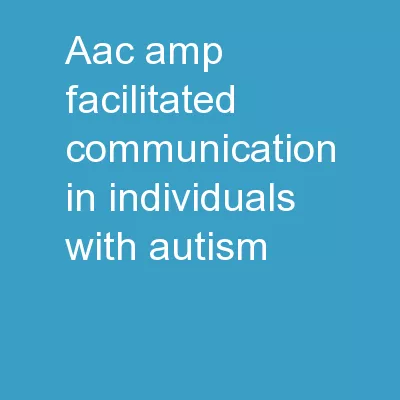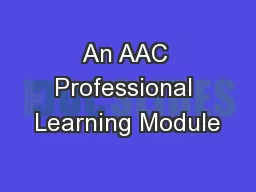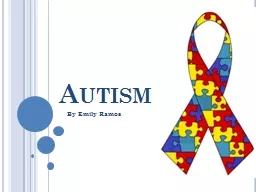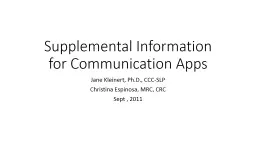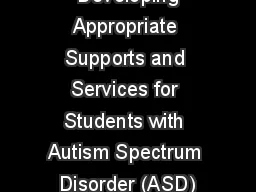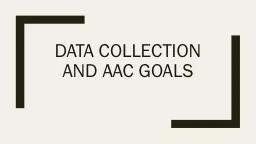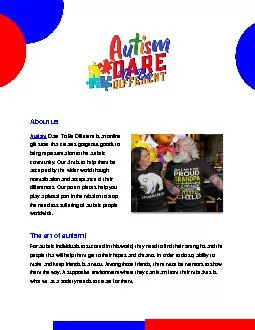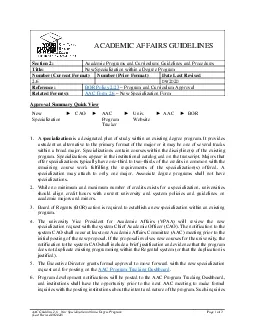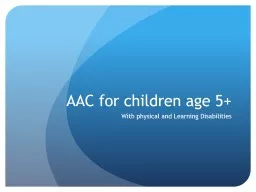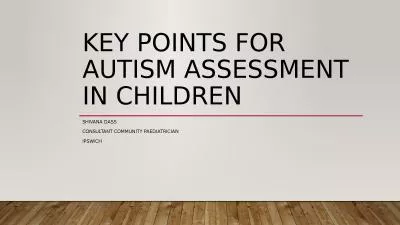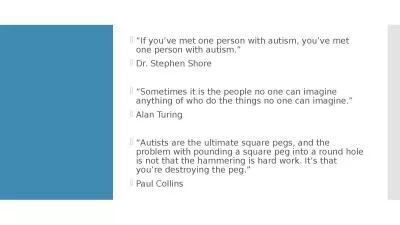PPT-AAC & Facilitated Communication in Individuals with Autism
Author : danika-pritchard | Published Date : 2019-02-16
Sarah Choss amp Sara Cook CSD 823X Autism Spectrum Disorders ASD Autism and Autism spectrum disorder are terms to describe a group of disorders that affect brain
Presentation Embed Code
Download Presentation
Download Presentation The PPT/PDF document "AAC & Facilitated Communication in I..." is the property of its rightful owner. Permission is granted to download and print the materials on this website for personal, non-commercial use only, and to display it on your personal computer provided you do not modify the materials and that you retain all copyright notices contained in the materials. By downloading content from our website, you accept the terms of this agreement.
AAC & Facilitated Communication in Individuals with Autism: Transcript
Download Rules Of Document
"AAC & Facilitated Communication in Individuals with Autism"The content belongs to its owner. You may download and print it for personal use, without modification, and keep all copyright notices. By downloading, you agree to these terms.
Related Documents

